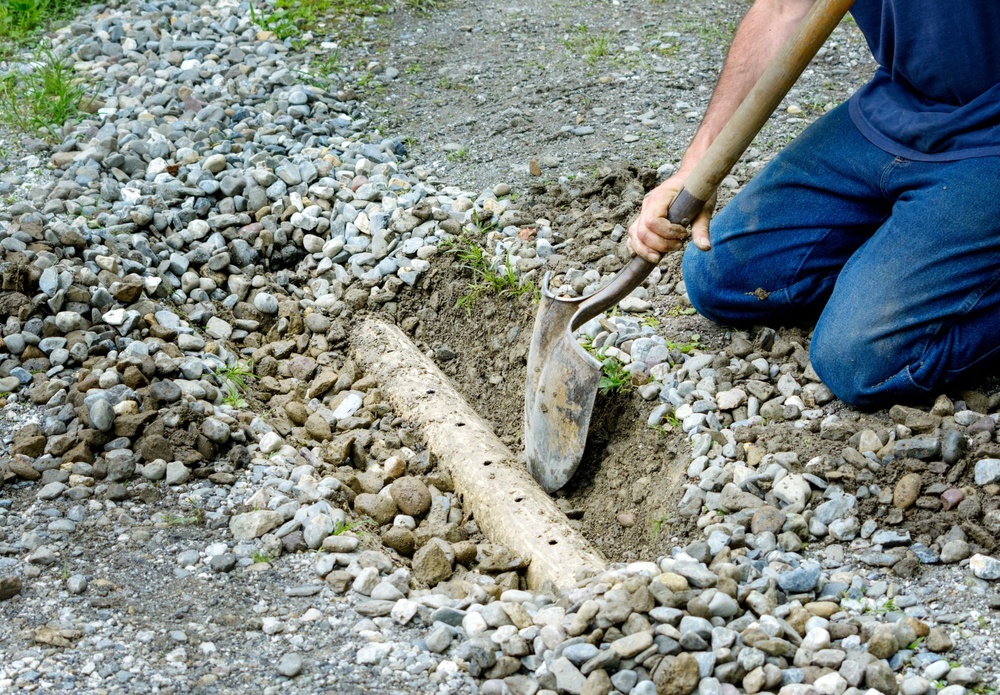Building your new home is quite an achievement. You’ve put in the work, and it has all paid off. Imagine a situation where all your investment goes down the drain due to avoidable hitches here and there.
One of the hitches that can negatively affect your new home is a flood. It’s likely the case if you live in an area prone to heavy rainfall. Therefore, to protect your investment, it’s important to cushion it against flood. How will you do this?
Here's a guide to assist you:
Build An Effective Drainage System
A drainage system depicts how water flows in your block. A badly designed one will lead water toward your home, increasing the chances of flooding. Therefore, build an effective drainage system.
One of the solutions you can seek is a French drain. It’s a drain with a perforated pipe. French drains are effective in redirecting water to where you want it to go. Unlike normal drainage pipes that only allow water to drain from their ends, French drain pipes drain water from 90% of their surface. Just be sure to place the drain around your home’s perimeter a few meters from its foundation.
In addition, check the slope of your block. Does it slope towards or away from your foundation? If it’s towards, flooding is possible. You can alter this by raising the ground near your home’s plinth. Consider heaping soil a few inches high around your home: add gravel to prevent the soil from draining away with surface water. The heaped soil will make water drain away from your home, reducing the possibility of flooding.

Waterproof Your Home
As you safeguard your home against flooding, it’s important to acknowledge that there’s a possibility of the water ending up next to your foundation. That’s why waterproofing is important. It’ll prevent the entry of flood water into your home by creating a non-permeable membrane.
The areas to waterproof are the external walls of your basement if they’re exposed and your walls and floors. Floor waterproofing will minimize, if not prevent, water damage should the flood water get to your floors.
There are many waterproofing solutions from which you can choose. It’s best to work with an expert as you choose. They’ll advise on the best solution for your home.
Adopt Rainwater Harvesting
Most flood water originates from heavy rainfall, which overloads your soil, and the excess floats. Therefore, one way to prevent flooding is by rainwater harvesting.
Rainwater harvesting involves harvesting water from your roof. A gutter system will come into play to prevent spillage and direct the water to where you need it. Ensure you clean it regularly. A gutter guard will come in handy to prevent the entry of debris, which clogs the gutter and interfere with the harvesting.
You’ll also need water tanks to store the water for future use. Ensure you choose a tank big enough to accommodate rainwater despite its intensity. You can adapt slimline or underground water tanks if you lack enough space in your compound.
The benefit of rainwater harvesting is that it’ll reduce the surface run-off that’d otherwise percolate the soil and clog it. The less water that floods, the less the possibility of it getting into your home.
Seal Your Building Envelope
The building envelope refers to the elements that enclose your new home. These include the walls, windows, doors, and roof.
The elements mentioned are the common entry points of flood water into your home. Therefore, they should be part of your preventive measures.
You want to ensure they’re properly installed during the building process. You can only ensure this by working with a qualified contractor who knows what they’re doing. The contractor will ensure the doors and windows fit right without any spaces. They’ll also install the roof correctly, ensuring it’s in good condition.
As stated earlier, it’s always advisable to prepare for the unexpected. In this case, there may be leaks at your door or windows. The solution to this is sealing the spaces with a silicone sealant. Alternatively, weather strip these elements with a rubber material.
For your roof, practice regular maintenance. It involves inspecting it for any issues like holes. These holes will give rainwater entry into your home, causing floods. Ask a roofing contractor to assist you in doing this. They’re better placed at inspecting and pinpointing issues.
Although not part of the building envelope, it’d help to raise your floor at your entry and exit doors. Please do the same for your plinth all around your home. They shouldn’t be on the same level as the ground; have your house’s floor higher by a few centimetres. The step will reduce the possibility of flood water getting into your home even if it’s there.
Conclusion
Flood water is one of the worst nightmares a homeowner can have. It can bring about water damage, destroying your furniture and other investments inside your home. In other cases, electrocution is also possible. This article guides you on safeguarding your new home against flooding. Consider implementing this guide in your home and you’ll enjoy your investment with minimal worries.
Publisher Website: https://drainmastersplumbing.com.au/